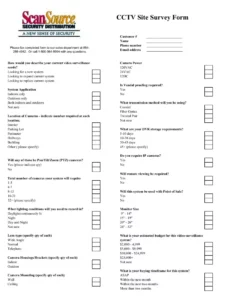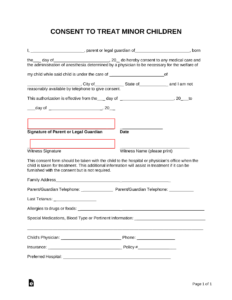The magic of filmmaking often seems effortless on screen, but behind every perfectly matched shot, every consistent costume detail, and every seamless performance lies an intricate dance of planning and meticulous record-keeping. Imagine a film set bustling with crew, actors, cameras, and countless takes – without a system in place, chaos could quickly ensue, especially when it comes to maintaining a coherent narrative.
That’s where the unsung hero, the script supervisor, steps in. Their job is to be the guardian of continuity, ensuring that everything from a character’s forgotten coffee cup to the exact timing of a sunset shot remains consistent across potentially days or even weeks of filming. And at the heart of their crucial work is an indispensable tool: the script supervisor continuity log template. This isn’t just a piece of paper; it’s the blueprint that holds the visual and narrative integrity of a film together.
Deconstructing the Essential Elements of a Continuity Log
For those new to the world of film production, or even seasoned veterans looking to refine their process, understanding what truly comprises a comprehensive continuity log is key. A script supervisor’s daily log is far more than just a chronological list of shots. It’s a detailed repository of information that editors, directors, and even actors will rely on heavily during post-production and potential reshoots. It’s about documenting every single detail, no matter how small it may seem at the moment of filming.
Think of the script supervisor as the director’s second pair of eyes, the editor’s best friend, and the continuity police all rolled into one. They are constantly cross-referencing, observing, and noting. A well-designed script supervisor continuity log template provides the framework for capturing all this vital data systematically, ensuring no crucial information slips through the cracks. It standardizes the data collection, making it easy to review and understand later.
Scene and Shot Identification
The foundation of any log is knowing exactly what you’re filming. This section is all about basic organizational details:
- Production Title: Obvious, but essential for multi-project script supervisors.
- Date: When the filming took place.
- Day/Night: Crucial for lighting continuity.
- Scene Number: As per the script.
- Setup Number: A unique identifier for each camera placement.
- Take Number: Each attempt at a setup.
- Sound Roll/Card Number: For audio synchronization.
- Camera Roll/Card Number: For visual synchronization.
Detailed Performance and Technical Notes
Beyond the basics, the log dives deep into the actual performance and technical aspects of each take. This is where the script supervisor’s keen eye truly shines, capturing the minutiae that impact the final edit.
- Dialogue: Exact lines spoken, noting any ad-libs or deviations from the script.
- Action: Precise blocking, gestures, and physical movements of actors.
- Wardrobe Changes: Noting specific outfits, accessories, and their condition.
- Props: Placement, condition, and interaction with props.
- Set Dressing: Any changes to the background or environment.
- Lens Used: Focal length for matching shots.
- Camera Speed/FPS: Especially important for slow-motion or speed ramps.
- Time Code: Start and end times for each take, invaluable for editors.
- Good Take/Circle Take: Marking the director’s preferred takes.
- Remarks/Notes: Any specific director’s notes, continuity errors, technical issues, or ideas for the edit.
These detailed observations are paramount. Without them, a character might suddenly have a pristine shirt after a fight scene, or a prop could mysteriously disappear between cuts. A robust script supervisor continuity log template empowers the script supervisor to maintain this vigilant watch, documenting everything systematically.
The Undeniable Benefits of a Standardized Template
In a fast-paced environment like a film set, efficiency is paramount, and a standardized script supervisor continuity log template is a powerful tool for achieving it. Instead of reinventing the wheel with every new production, or worse, adopting an inconsistent logging style, a well-structured template provides a familiar, comprehensive framework. This consistency not only saves valuable time during production but also significantly reduces the potential for errors that can be costly and time-consuming to fix in post-production.
Think about the downstream impact. When an editor receives neatly organized and consistently formatted log sheets, their job becomes infinitely easier. They can quickly locate preferred takes, understand continuity notes, and piece together the narrative with confidence. The clarity provided by a standardized template minimizes guesswork and facilitates a smoother, faster editing process, directly impacting the production timeline and budget.
Furthermore, a template serves as an excellent training tool for new script supervisors or assistant script supervisors. It outlines all the necessary information to collect, guiding them through the complexities of the role. It ensures that even when different individuals are logging, the output remains consistent and thorough, making handovers between crew members seamless and reducing the learning curve. This collective understanding of what needs to be documented fosters a more collaborative and efficient production environment.
While some productions might opt for highly customized digital solutions, the core principles of a good script supervisor continuity log template remain the same, whether it’s a printed physical document or a tablet-based application. The goal is always to provide a clear, comprehensive, and easily digestible record of everything that transpired during filming, protecting the integrity of the storytelling from start to finish. It’s an investment in accuracy that pays dividends throughout the entire filmmaking process.
Ultimately, the meticulous work of a script supervisor, aided by an excellent continuity log, is what allows a film to flow seamlessly, immersing the audience without jarring inconsistencies. It’s the behind-the-scenes hero that ensures the story on screen always makes sense.
By investing in a well-designed template and understanding its profound importance, filmmakers empower their script supervisors to perform at their best, safeguarding the coherence and quality of their cinematic vision. It’s a small detail in the grand scheme of production, yet one that yields enormous returns in professionalism and artistic integrity.

